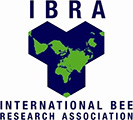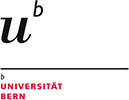Honey bees directly affect and are influenced by their local environment, in terms of food sources, pollinator densities, pathogen and toxin exposure and climate. Currently, there is a lack of studies analyzing these data with Geographic Information Systems (GIS) to investigate spatial relationships with the environment.
Particularly for inter-colonial pathogen transmission, it is known that the likelihood of a healthy colony to become infested (e.g., Varroosis) or infected (e.g., American foulbrood—AFB, European foulbrood—EFB) increases with higher colony density. Whether these transmission paths can actually be asserted at apiary level is largely unknown.
Here, we unraveled spatial distribution and high-resolution density of apiaries and bacterial honey bee brood diseases in Switzerland based on available GIS data. Switzerland as ‘model country’ offers the unique opportunity to get apiary data since 2010 owing to compulsory registration for every beekeeper. Further, both destructive bee brood diseases (AFB and EFB) are legally notifiable in Switzerland, and EFB has an epizootic character for the last decades.
As governmental data sets have to be ameliorated, raw data from the cantonal agricultural or veterinary offices have been included. We found a mean density of 0.56 apiaries per km2, and high resolution spatial analyzes showed strong correlation between density of apiaries and human population density as well as agricultural landscape type. Concerning two bacterial bee brood diseases (AFB, EFB), no significant correlation was detectable with density of apiaries on cantonal level, though a high correlation of EFB cases and apiary density became obvious on higher resolution (district level).
Hence, Swiss EFB epizootics seem to have benefited from high apiary densities, promoting the transmission of pathogens by adult bees. The GIS-based method presented here, might also be useful for other bee diseases, anthropogenic or environmental factors affecting bee colonies.







